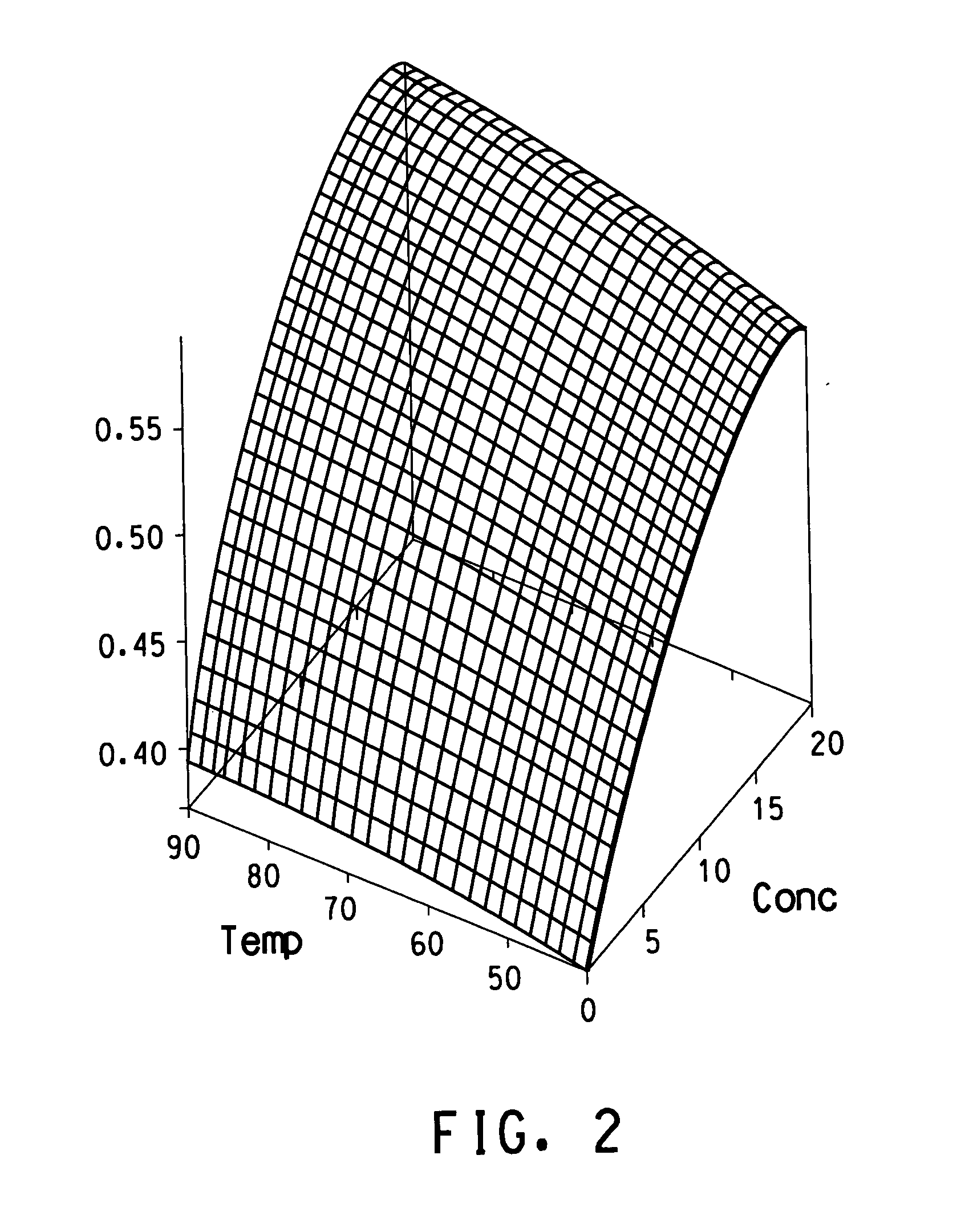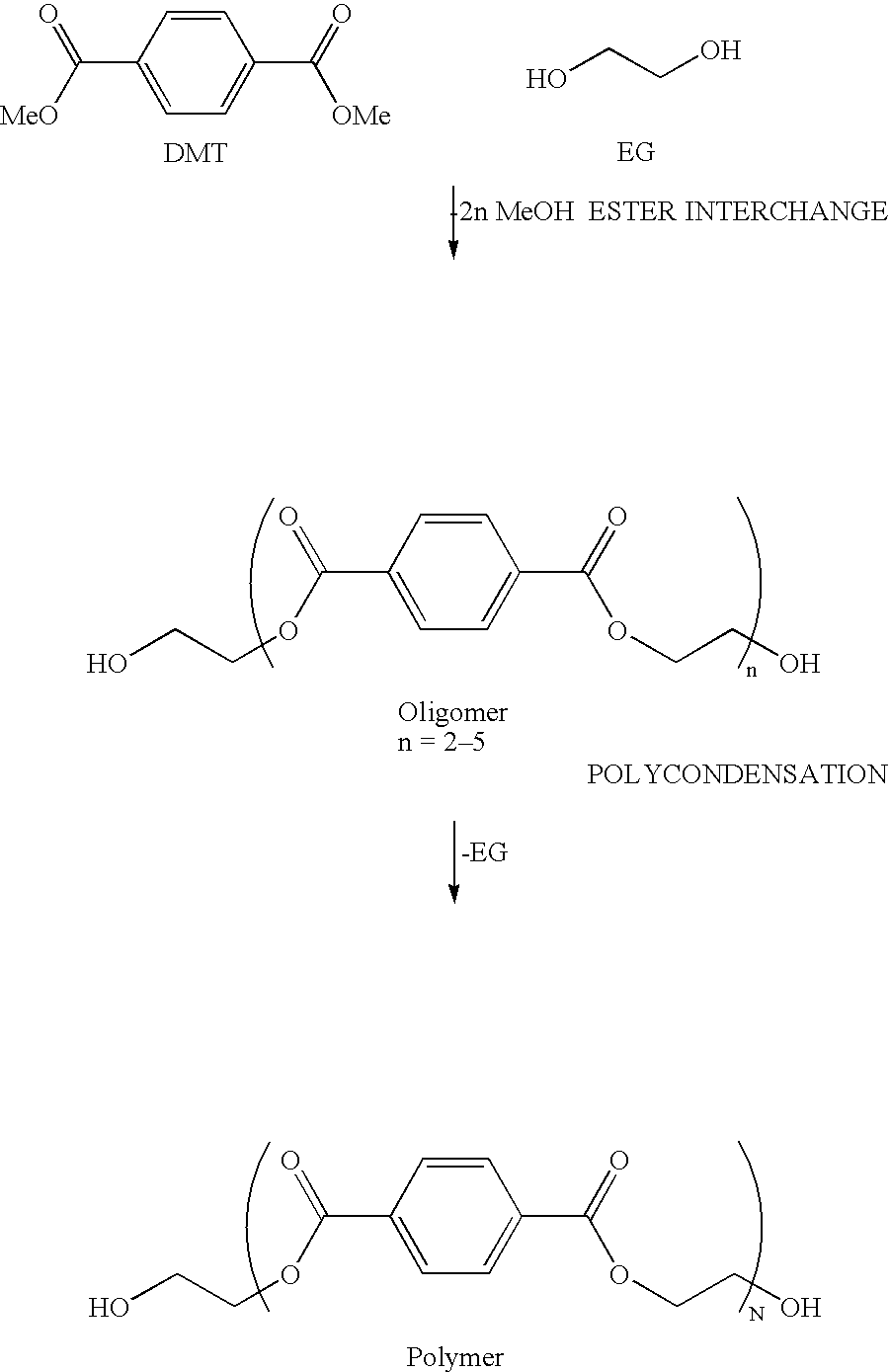High temperature resistant fiberfill comprising PETN fibers
a fiberfill and high temperature resistant technology, applied in the field of polyester fiberfill, can solve the problems of difficult recycling of incumbent materials such as polyurethane foam, and neither of these references disclose filling materials obtained from fibers produced, and achieve the effect of superior bulk retention and superior compression performan
- Summary
- Abstract
- Description
- Claims
- Application Information
AI Technical Summary
Benefits of technology
Problems solved by technology
Method used
Image
Examples
example 1
PETN10 was prepared as follows. PETN polymers containing 10 mole % of the end units as naphthalate were prepared in the 40-gallon autoclave and crystallized using the fluid bed. Dimethyl terephthalate (DMT) (63 kg), dimethyl 2,6-naphthalene dicarboxylate (8.8 kg), ethylene glycol (42 L) and manganese acetate. 4H2O (430 ppm, 29.7 g) were placed in a 40-gallon polymerization reactor under nitrogen. The mixture was heated slowly with stirring and the reflux column mid-point set to 90° C. to enable the methanol generated to be evolved from the reaction. After 20 L of methanol were collected, the column mid-point was set to 220° C. and the reaction temperature increased to 230° C. Once a temperature of 230° C. was achieved 85% phosphoric acid (250 ppm, 20.6 g) in 200 ml ethylene glycol was added and allowed to react in to the mixture for 5 minutes prior to transfer to a second autoclave. Antimony trioxide (400 ppm, 27.8 g) cobalt acetate4H2O (150 ppm, 10.4 g) in 700 ml ethylene glycol w...
example 2 , 3 and 4
EXAMPLE 2, 3 AND 4
PETN5, 15 and 20 copolymers were also prepared in a similar manner to that described above in Example 1. The levels of DMT and NDC were as follows: 66.5 kg of DMT and 4.4 kg of NDC were used; for PETN15, 59.5 kg of DMT and 13.2 kg of NDC were used; and for PETN20, 56 kg of DMT and 17.6 kg of NDC were used. For all of these polymers, and for the polymers prepared in Example 1, a mole ratio of 2.1:1 was used, i.e., 2.1 moles of alcohol were added for every mole of dimethylester.
Drawn fibers were produced, cut, carded and made into batts. BL1 and BL2 were measured as described above, and the measurements are shown in FIGS. 1 and 2.
PUM
| Property | Measurement | Unit |
|---|---|---|
| temperature | aaaaa | aaaaa |
| total weight | aaaaa | aaaaa |
| temperature | aaaaa | aaaaa |
Abstract
Description
Claims
Application Information
 Login to View More
Login to View More - R&D
- Intellectual Property
- Life Sciences
- Materials
- Tech Scout
- Unparalleled Data Quality
- Higher Quality Content
- 60% Fewer Hallucinations
Browse by: Latest US Patents, China's latest patents, Technical Efficacy Thesaurus, Application Domain, Technology Topic, Popular Technical Reports.
© 2025 PatSnap. All rights reserved.Legal|Privacy policy|Modern Slavery Act Transparency Statement|Sitemap|About US| Contact US: help@patsnap.com



